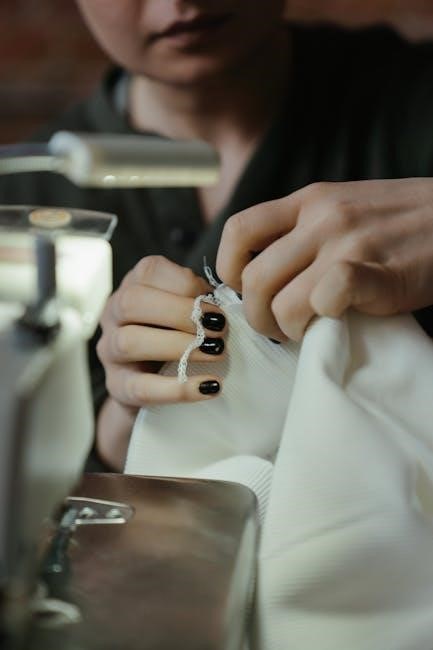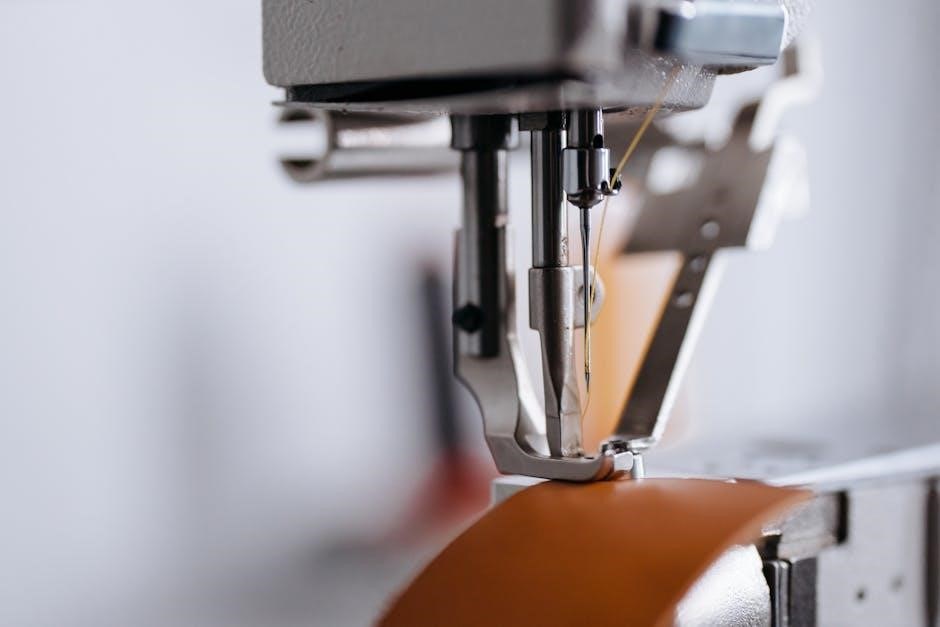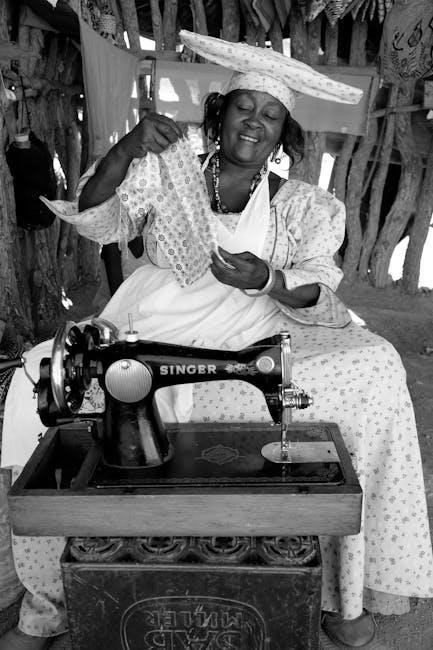Singer sewing machine troubleshooting manual provides guidance on resolving issues with machines, using
- step-by-step instructions
and helpful tips to get sewing machines working properly again quickly and efficiently always.
Importance of Troubleshooting
Troubleshooting is a crucial aspect of maintaining and repairing Singer sewing machines, as it helps to identify and resolve issues quickly and efficiently, saving time and money in the long run. By using a troubleshooting manual, users can learn to diagnose and fix common problems, such as thread bunching, skipped stitches, and jammed machines. This not only extends the life of the machine but also ensures that sewing projects are completed to a high standard. Additionally, troubleshooting helps to prevent further damage to the machine, reducing the need for costly repairs or even replacement. With a good understanding of troubleshooting techniques, users can confidently tackle sewing projects, knowing that they have the skills and knowledge to overcome any obstacles that may arise. Troubleshooting is an essential skill for anyone who uses a Singer sewing machine regularly, whether for personal or professional purposes, and is a key part of getting the most out of the machine.

Common Singer Sewing Machine Problems
Issues with Singer machines include poor stitching, thread breakage, and mechanical failures, requiring troubleshooting and repair using
- specific techniques
and tools always.
Thread Bunching Under the Needle
Thread bunching under the needle is a common issue with Singer sewing machines, causing frustration and delaying projects. This problem can be resolved by checking the thread tension, ensuring it is not too tight or too loose, and adjusting the tension discs accordingly. Using the correct type of thread for the fabric being sewn is also crucial, as some threads are more prone to bunching than others. Additionally, cleaning the machine and oiling the parts can help to prevent thread bunching. It is also important to use the correct needle type and size for the fabric, as a needle that is too small or too large can cause thread to bunch. By following these steps and using the troubleshooting guide provided in the Singer sewing machine manual, users can resolve thread bunching issues and get back to sewing quickly and efficiently. Regular maintenance and upkeep can also help to prevent this issue from occurring in the future.

Troubleshooting Guides and Resources
Online resources and guides provide troubleshooting tips and solutions for Singer sewing machine issues using official websites and user manuals always.
Instruction Books and Operator Guides
Instruction books and operator guides are essential resources for Singer sewing machine users, providing detailed information on machine operation, maintenance, and troubleshooting. These guides are usually provided with the machine or can be downloaded from the official Singer website. They contain step-by-step instructions, diagrams, and illustrations to help users understand the machine’s features and functions. The guides also cover topics such as threading, bobbin winding, and stitch selection, as well as troubleshooting common issues like thread breakage, needle damage, and machine jamming. By following the instructions and guidelines in these books, users can ensure proper machine operation, prevent problems, and extend the life of their Singer sewing machine. Additionally, the guides often include tips and techniques for optimizing machine performance, improving stitch quality, and enhancing overall sewing experience. Using these resources can help users become more proficient and confident in their sewing skills.

Singer Machine FAQs and Helpful Tips
Using Singer machine FAQs and helpful tips from official websites and guides improves sewing skills and resolves issues quickly always.
Helpful Tips and Troubleshooting Guide
A comprehensive Singer sewing machine troubleshooting manual provides helpful tips and guides to resolve common issues, including thread bunching and skipped stitches, using step-by-step instructions and diagrams. The guide covers various topics, such as choosing the right needle and thread, and provides tips on how to maintain the machine. Additionally, it offers solutions to problems like puckering and looping, and provides advice on how to prevent these issues from occurring. By following the tips and guides outlined in the manual, users can improve their sewing skills and resolve issues quickly and efficiently. The manual also includes a troubleshooting section, which helps users to identify and fix problems with their machine. With the help of this guide, users can keep their Singer sewing machine in good working condition and achieve professional-looking results. The guide is available online and can be downloaded or printed for easy reference.

Troubleshooting Common Issues
Resolving jams and incorrect tension issues with Singer machines using
- diagnostic tools
and repair techniques always helps to fix problems quickly and efficiently every time.
Jams, Skipped Stitches, and Incorrect Tension
Jams, skipped stitches, and incorrect tension are common issues that can occur with Singer sewing machines, causing frustration and delaying projects. To resolve these problems, it is essential to identify the root cause, which can be due to various factors such as incorrect thread tension, misaligned needles, or clogged machine parts. Using diagnostic tools and repair techniques, sewers can troubleshoot and fix these issues quickly and efficiently. The Singer sewing machine troubleshooting manual provides guidance on resolving these common problems, including step-by-step instructions and helpful tips. By following these guidelines, sewers can prevent jams, skipped stitches, and incorrect tension, ensuring smooth and efficient sewing operations. Regular maintenance and cleaning of the machine can also help prevent these issues, keeping the Singer sewing machine in top working condition. This helps to ensure seamless stitching and professional-looking results.
Cleaning and Maintenance
Regular cleaning and maintenance of Singer sewing machines using specialized tools is necessary always.
Cleaning Your SING Machine
Cleaning your SING machine is an essential part of maintaining its performance and extending its lifespan. Using a soft brush, gently remove any dust or debris that may have accumulated on the machine’s surface. It is also important to regularly clean the machine’s bobbin area and feed dogs to prevent thread buildup and jams. Additionally, using a lint roller or small vacuum cleaner can help remove any loose threads or fibers that may be caught in the machine’s mechanisms. By following these simple cleaning steps, you can help keep your SING machine running smoothly and prevent common issues such as thread breakage or machine jamming. Regular cleaning can also help to prevent the growth of mold or mildew on the machine, which can cause damage to the machine’s internal components. Overall, cleaning your SING machine is a simple and effective way to maintain its performance and extend its lifespan.



